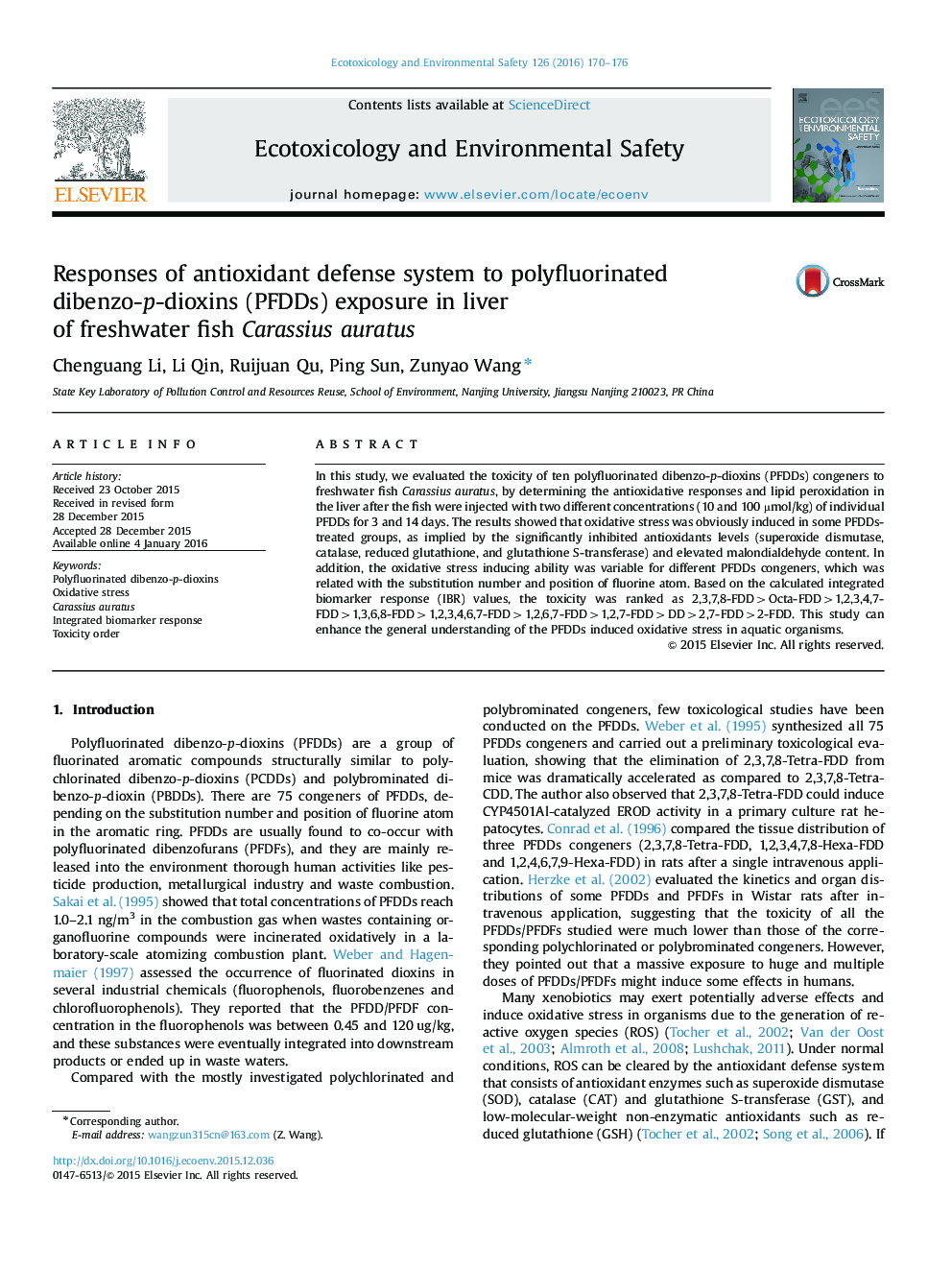| Article ID | Journal | Published Year | Pages | File Type |
|---|---|---|---|---|
| 4419212 | Ecotoxicology and Environmental Safety | 2016 | 7 Pages |
•Significant changes in SOD, CAT, GST, GSH and MDA was observed in exposed fish.•Oxidative stress inducing ability related to substitution number and position of F.•2,3,7,8-FDD induced the highest oxidative stress.
In this study, we evaluated the toxicity of ten polyfluorinated dibenzo-p-dioxins (PFDDs) congeners to freshwater fish Carassius auratus, by determining the antioxidative responses and lipid peroxidation in the liver after the fish were injected with two different concentrations (10 and 100 µmol/kg) of individual PFDDs for 3 and 14 days. The results showed that oxidative stress was obviously induced in some PFDDs-treated groups, as implied by the significantly inhibited antioxidants levels (superoxide dismutase, catalase, reduced glutathione, and glutathione S-transferase) and elevated malondialdehyde content. In addition, the oxidative stress inducing ability was variable for different PFDDs congeners, which was related with the substitution number and position of fluorine atom. Based on the calculated integrated biomarker response (IBR) values, the toxicity was ranked as 2,3,7,8-FDD>Octa-FDD>1,2,3,4,7-FDD>1,3,6,8-FDD>1,2,3,4,6,7-FDD>1,2,6,7-FDD>1,2,7-FDD>DD>2,7-FDD>2-FDD. This study can enhance the general understanding of the PFDDs induced oxidative stress in aquatic organisms.
